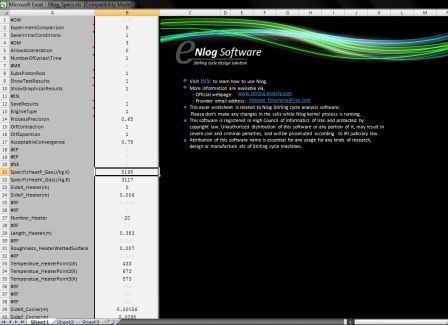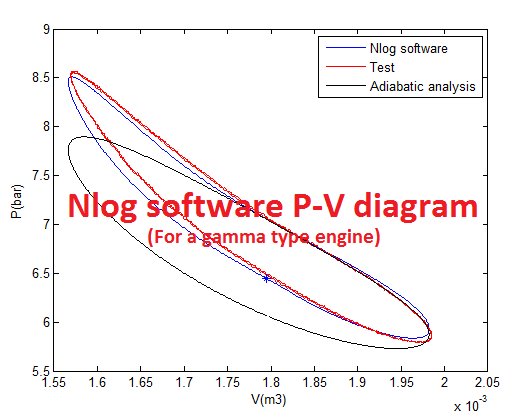
Stirling Engine Analysis Software
A beneficial optimization tool for Stirling engines
Stirling Engine Analysis Software
A beneficial optimization tool for Stirling enginesWhat Nlog does
I- Enter following variables into Nlog GUI:
- Stirling machine type.
- Geometry properties of all gas transferring channels, pipes, and chambers.
- Wetted wall surface areas and roughness factor for each.
- Regenerator type, geometry and porosity.
- Non-Ideal working gas properties
(Including compressibility factor, fluid thermal conductivity and viscosity relations).
- Engine initial charge pressure and local temperatures.
- Heat exchangers wall temperature gradient (Constant along time period).
- All of linear or rotating moving part’s mass and rotary inertia.
- Stiffness of springs if connected to any of moving parts, neglecting spring mass.
- Geometries of linkages between engine moving parts (If exist).
- External time varying force/torque applied to the engine.
II- Start software kernel and wait for about 30 minutes.
- Initial condition calculation
- Kernel process
III- Receive Nlog outputs:
- Engine output power and efficiency.
- Pressure against total volume.
- Heat transfer rate against time.
- Working gas velocity in pipes and channels.
- Rigid bodies velocity against time.
- Temperature of working gas at any point of your engine against time.
- Density of working gas at any point of your engine against time.
and much other useful information about your engine working fluid behavior and dynamics...
Nlog GUI (Microsoft excel based):

Nlog graphical output example: (P-V diagram)
